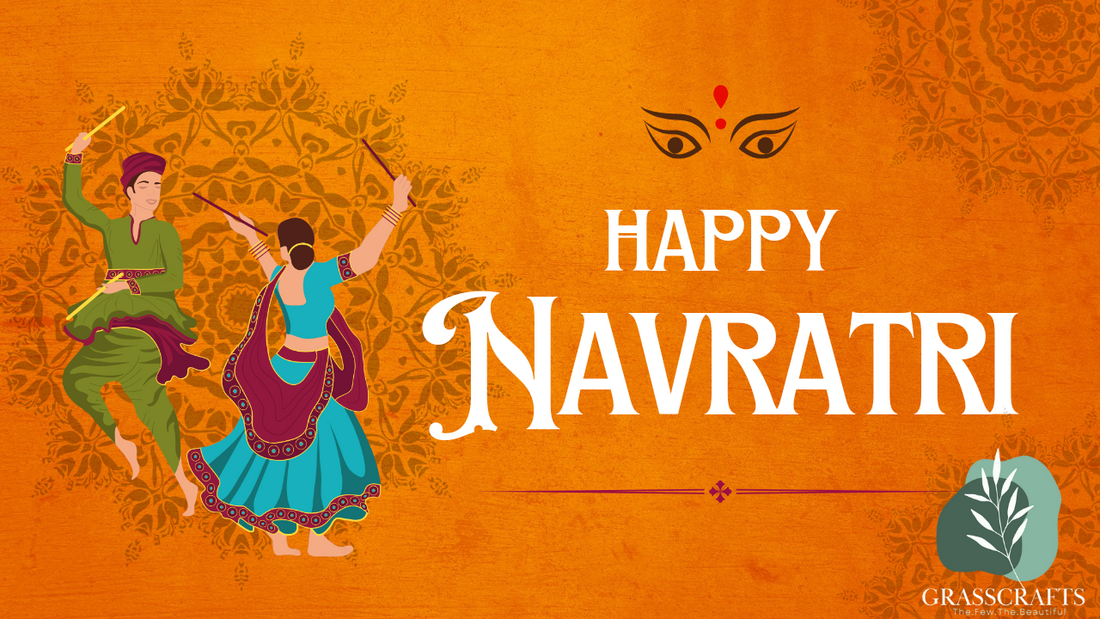
Celebrate Navratri: Embrace Traditions, Colors, and Eco-Friendly Decor
Amit DeyExplore the vibrant traditions of Navratri, including its nine colors and spiritual significance. Discover eco-friendly decorating ideas and gifts for a sustainable celebration this festive season.
Navratri, a nine-night festival, is a significant celebration for Hindus, honoring Goddess Durga in her various forms. Each day is marked by unique rituals, colors, and themes, culminating in a vibrant expression of devotion and community spirit. In this guide, we’ll explore the rich traditions of Navratri, the meanings behind each day’s color, and innovative eco-friendly decor ideas to make your celebrations both beautiful and sustainable.
The Nine Days of Navratri and Their Colors
Each day of Navratri is dedicated to a different form of Goddess Durga, and each day is associated with a specific color:
- Day 1: Pratipada - Goddess Shailputri
- Color: Yellow
- Significance: Represents positivity and energy, marking a strong beginning.
- Day 2: Dwitiya - Goddess Brahmacharini
- Color: Green
- Significance: Symbolizes growth and harmony, reflecting patience and devotion.
- Day 3: Tritiya - Goddess Chandraghanta
- Color: Grey
- Significance: Represents courage and balance, reminding us to confront challenges.
- Day 4: Chaturthi - Goddess Kushmanda
- Color: Orange
- Significance: Signifies enthusiasm and creativity, celebrating life’s vibrancy.
- Day 5: Panchami - Goddess Skandamata
- Color: White
- Significance: Symbolizes purity and peace, emphasizing the nurturing aspect of motherhood.
- Day 6: Shashti - Goddess Katyayani
- Color: Red
- Significance: Represents power and determination, motivating us to overcome obstacles.
- Day 7: Saptami - Goddess Kalaratri
- Color: Royal Blue
- Significance: Symbolizes depth and stability, highlighting the triumph of light over darkness.
- Day 8: Ashtami - Goddess Mahagauri
- Color: Pink
- Significance: Represents love and compassion, encouraging inner purification.
- Day 9: Navami - Goddess Siddhidatri
- Color: Purple
- Significance: Symbolizes spirituality and mysticism, reflecting spiritual achievement.
Eco-Friendly Decoration Ideas for Navratri
Celebrate Navratri while being environmentally conscious! Here are some creative and sustainable decor ideas:
- Eco-Friendly Wall Hangings: Use natural materials like Sabai, Jute, or Wicker to create beautiful wall hangings that add earthy charm to your home.
- Organic Planters: Incorporate Cane, Bamboo, or Sabai planters to bring greenery indoors, creating a serene atmosphere.
- Natural Dry Flowers: Decorate your space with handmade, organic dry flowers for an elegant and eco-conscious touch.
- Organic Lights: Illuminate your home with eco-friendly lighting options like Shola chain lights, Bamboo lamps, or Cane lampshades for a cozy ambiance.
- Sustainable Puja Decor: Incorporate Bamboo, Cane, and Sabai trays, baskets, and boxes into your traditional Puja setup.
- Organic Furniture: Add handmade Cane morahs and Sitalpati mats for a touch of natural elegance.
These sustainable decor choices not only beautify your space but also reflect the values of tradition and care for the environment.
Eco-Friendly Navratri Gift Ideas
This Navratri, consider giving gifts that are both meaningful and environmentally friendly:
- Kauna Hand Bags: Unique and eco-friendly, Kauna bags showcase traditional craftsmanship.
- Handcrafted Jewelry: Opt for jewelry made from bamboo, wood, or repurposed materials.
- Sustainable Decor: Gift handwoven Jute rugs or organic Cotton cushion covers to enhance home aesthetics.
- Natural Skincare Sets: Share the gift of organic soaps, herbal creams, or essential oils.
- Organic Sweets: Treat loved ones with handmade sweets made from natural ingredients.
- DIY Craft Kits: Inspire creativity with craft kits made from sustainable materials.
Choosing eco-friendly gifts not only shows appreciation but also supports a greener future.
FAQs
What is the significance of Navratri?
Navratri honors the various forms of Goddess Durga and commemorates the victory of good over evil.
How can I celebrate an eco-friendly Navratri?
Use organic materials for decorations, choose eco-friendly items, and avoid single-use plastics. Visit GrassCrafts.com for sustainable treasures.
What are the four types of Navratri?
- Chaitra Navratri
- Sharad Navratri
- Magha Gupt Navratri
- Ashada Navratri
Each has unique customs, but all honor Goddess Durga.
Is there a scientific reason behind Navratri?
Navratri aligns with seasonal changes and may promote mental and emotional well-being through community engagement and rituals.
Conclusion
This Navratri, celebrate with zest while honoring the goddess and embracing eco-friendly decor. Make your festivities visually stunning and environmentally responsible by incorporating sustainable practices into your celebrations. For a wide range of handcrafted, organic, and eco-friendly products, visit GrassCrafts.com and make your Navratri truly special.
